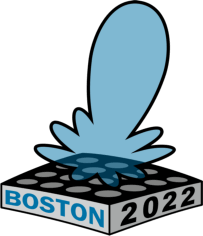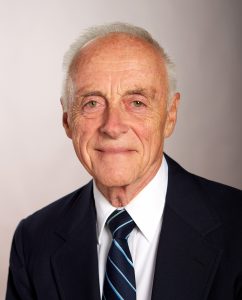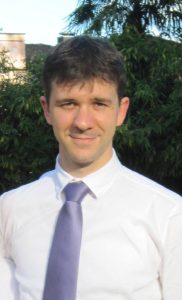2022 IEEE International Symposium
on Phased Array Systems and Technology
Revolutionary Developments in Phased Arrays
11–14 October 2022

Tutorial: Low-Complexity Phased Arrays for Modern Applications
Modern phased array applications, such as 5G, are imposing ever growing constraints and requirements on phased arrays. These include the need
for multiple functionalities, larger bandwidth, higher reconfigurability, smaller size, lower weight, and reduced costs. Regularly spaced digital phased arrays, in which the radiating elements are arranged on a regular lattice, and each element is equipped with an independent T/R module and a digital channel, result in high cost and complexity.
In this context, this tutorial focuses on irregular phased array, in which the number of degrees of freedom for beam-forming is reduced (e.g., the element locations are sparse and the digital channels are implemented at the sub-array level). Starting from a theoretical overview of irregular array, with a focus on sub-arrayed architectures, and on their impact on the radiation performance, novel design methods based on polyomino-tiling strategies and AI will be presented together with recent technological advances enabling their low-cost manufacturing and assembly.

Jeffrey Herd (MIT Lincoln Laboratory)
Dr. Jeffrey S. Herd is the Leader of the RF Technology Group, which develops and demonstrates innovative RF technologies as solutions to emerging national security needs in radar, electronic warfare, and communications. In addition to directing these group activities, he is the Laboratory lead for internally funded research on RF systems.
Prior to joining the Laboratory in 1999, Dr. Herd worked in the Sensors Directorate of the Air Force Research Laboratory, where he developed phased array antenna technologies, including wideband scanning arrays, multi-frequency antennas, conformal arrays, and digital beamforming arrays. From 1992 to 1994, he was a visiting scientist at the Institute for High Frequency Physics at the German Aerospace Research Establishment (DLR) in Munich, Germany.
Dr. Herd has published over 50 technical journal and conference papers, and is a Fellow of the IEEE. He served as an elected Administrative Committee member for the IEEE Antennas and Propagation Society, and has been on the Steering Committees for multiple international symposia. He was General Chair of the IEEE International Symposium on Phased Array Systems and Technology in 2013 and 2016, and is currently serving as General Chair for the 2019 conference. In 2012-2014, he served on the National Academy of Sciences panel for Active Scientific Uses of the Radio Spectrum.
Dr. Herd received his BS, MS, and PhD degrees, all in electrical engineering, from the University of Massachusetts Amherst.

Robert J. Mailloux (Air Force Research Laboratory)
Robert J. Mailloux received the BS degree in electrical engineering from Northeastern University, Boston, MA in 1961 and the SM and Ph.D degrees in 1965 from Harvard University, Cambridge MA.
He is a retired Senior Scientist at the Sensors Directorate, Air Force Research Laboratory, and has served as the Chief of the Antennas and Components Division, Rome Laboratory and as a physicist at the Air Force Cambridge Research Laboratory. He is the author or co-author of numerous journal articles, book chapters, 13 patents and the books Phased Array Handbook and Electronically Scanned Arrays and is co-editor of the book History of Wireless. He is a Life Fellow of the IEEE and an Honorary Professor in the Information Engineering and Computer Science Department and ELEDIA Research Center of the University of Trento, Trento Italy.
Dr. Mailloux is a member of Tau Beta Pi, Eta Kappa Nu, Sigma Xi, and of the Commission B International Scientific Radio Union. He was President of the Antennas and Propagation Society in 1983, and in 1992 he received the IEEE Harry Diamond Memorial Award. He received two IEEE AP-S Honorable Mention Best Paper Awards, the IEEE Third Millennium Medal and the AP-S Distinguished Technical Achievement Award. He has received four Air Force Research Laboratory “Best Paper” awards, the “Engineer of the Year” award, the Fred Diamond Award and is an AFRL Fellow. He has been a distinguished Lecturer for the Antenna and Propagation Society and is currently chairman of the AP-S / IEEE Press Liaison Committee.

Paolo Rocca (University of Trento)
Paolo Rocca (IEEE Senior Member, 2013) is currently Associate Professor at the Department of Civil, Environmental, and Mechanical Engineering (University of Trento), Huashan Scholar Chair Professor at the Xidian University, Xi'an, China, and a member of the ELEDIA Research Center. Moreover, he is Member of the Big Data and AI Working Group for the Committee on Engineering for Innovative Technologies (CEIT) of the World Federation of Engineering Organizations (WFEO). Prof. Rocca received the National Scientific Qualification for the position of Full Professor in Italy and France in April 2017 and January 2020, respectively.
Prof. Rocca is author/co-author of more than 430 scientific contributions, with more than 155 journals. He has been a visiting Ph.D. student at the Pennsylvania State University (USA), at the University Mediterranea of Reggio Calabria (Italy), and a visiting researcher at the Laboratoire des Signaux et Systèmes (L2S@ Supèlec, France) in 2012 and 2013. Moreover, he has been an Invited Professor at the University of Paris Sud (France) in 2015 and at the University of Rennes 1 (France) in 2017. Prof. Rocca has been awarded from the IEEE Geoscience and Remote Sensing Society and the Italy Section with the best PhD thesis award IEEE-GRS Central Italy Chapter. His main interests are in the framework of artificial intelligence techniques as applied to electromagnetics, antenna array synthesis and analysis, and electromagnetic inverse scattering. He served as an Associate Editor of the IEEE Antennas and Wireless Propagation Letters (2011-2016), the Microwave and Optical Technology Letters (2019-2020) and serves as an Associate Editor of the IEEE Antennas and Propagation Magazine (since 2020), and of Engineering (since 2020).
Copyright 2022